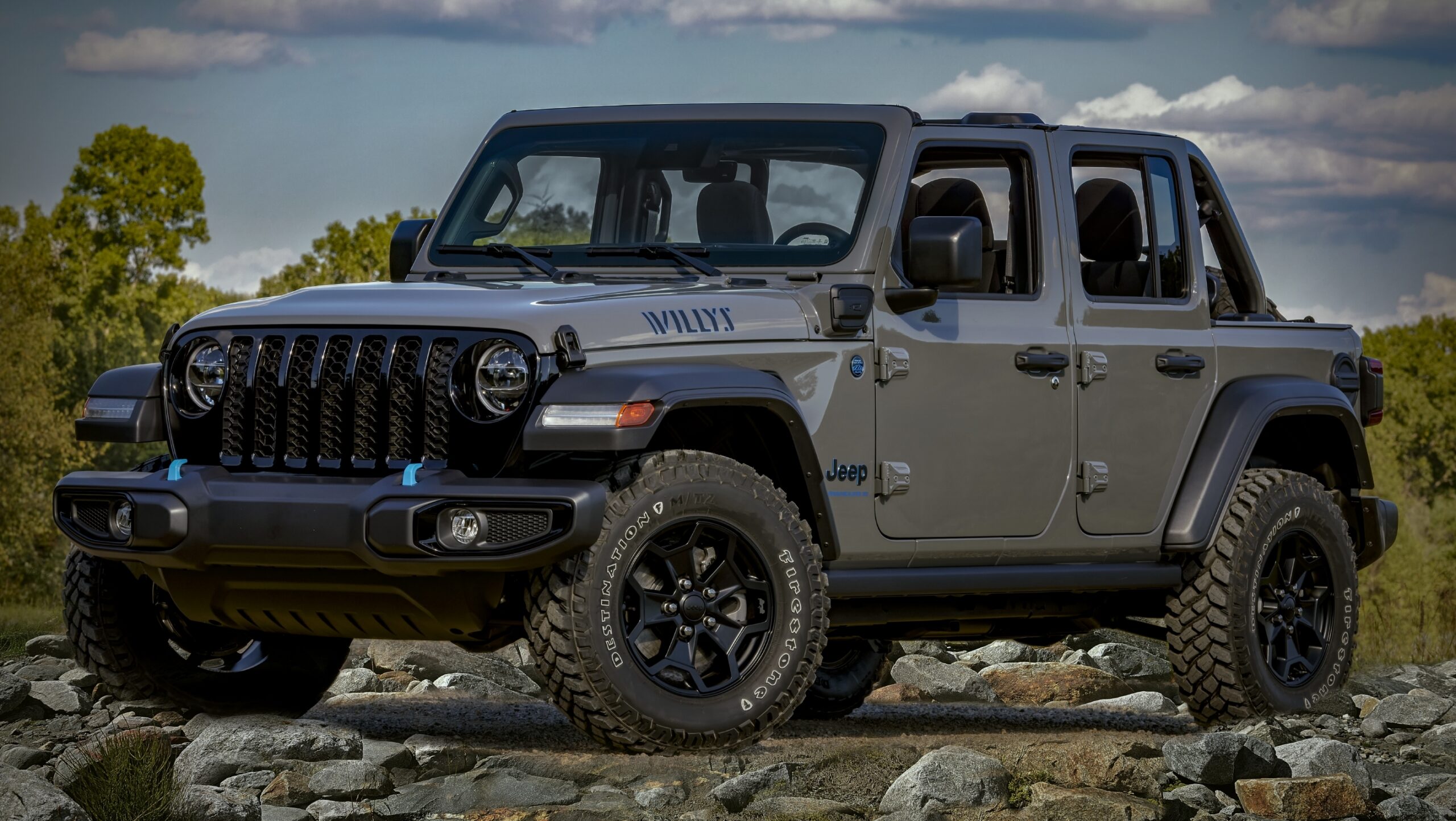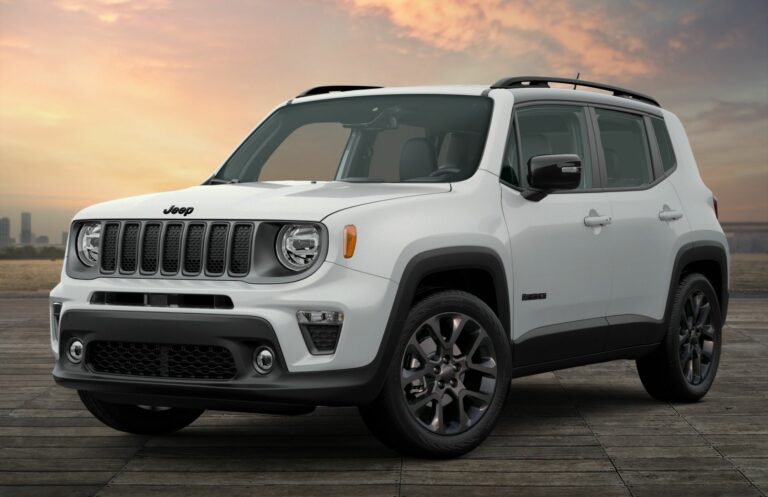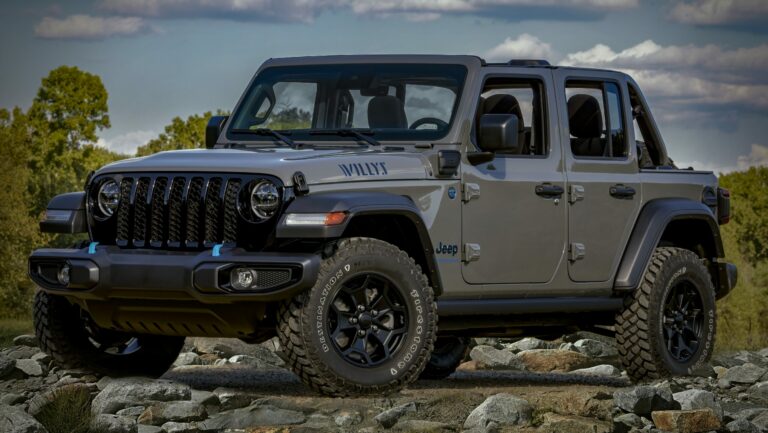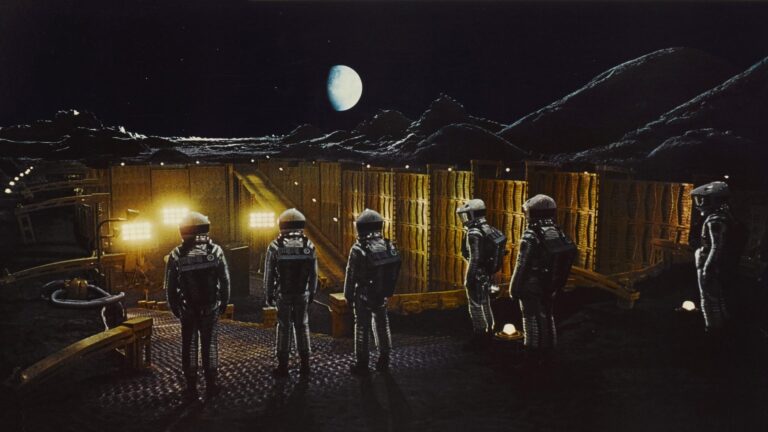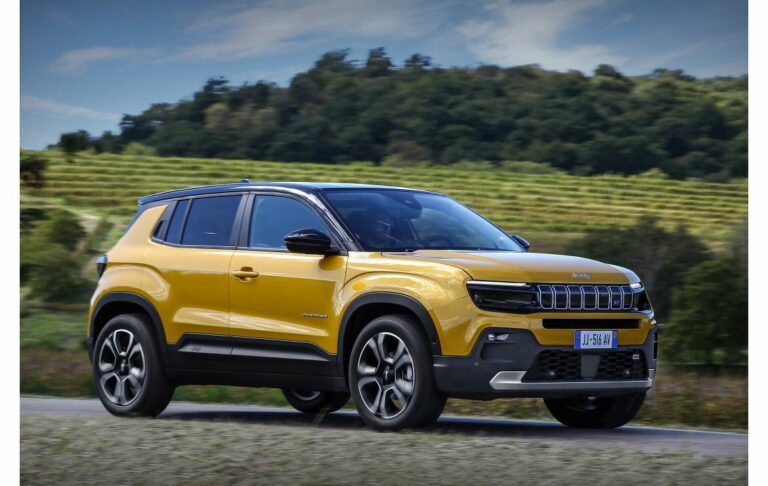Jeep WJ Wheels For Sale: A Comprehensive Guide to Upgrading Your Grand Cherokee
Jeep WJ Wheels For Sale: A Comprehensive Guide to Upgrading Your Grand Cherokee jeeps.truckstrend.com
The Jeep Grand Cherokee WJ, produced from 1999 to 2004, remains a beloved and highly capable SUV in the off-road community and among daily drivers alike. Known for its robust build, comfortable interior, and legendary Quadra-Trac II or Quadra-Drive systems, the WJ is a versatile platform. However, like any vehicle, its performance, aesthetics, and even safety are significantly influenced by its wheels. Whether you’re looking to replace a damaged set, upgrade for enhanced off-road prowess, or simply refresh your WJ’s appearance, navigating the market for "Jeep WJ Wheels For Sale" requires a solid understanding of your options and what to look for.
This comprehensive guide will delve deep into everything you need to know about purchasing wheels for your Jeep Grand Cherokee WJ, from understanding crucial specifications to finding the best deals, ensuring you make an informed decision that elevates your driving experience.
Jeep WJ Wheels For Sale: A Comprehensive Guide to Upgrading Your Grand Cherokee
Understanding Your Jeep Grand Cherokee WJ and Its Wheels
Before diving into the buying process, it’s essential to understand the fundamental characteristics of your WJ’s wheels. The 1999-2004 Grand Cherokee WJ comes with a specific set of requirements that dictate what wheels will fit and perform correctly.
Key Stock Specifications:
- Bolt Pattern: The most critical specification is the bolt pattern, which for the Jeep WJ is 5x127mm (or 5×5 inches). This means there are five lug holes, spaced in a 127mm circle. Any wheel you consider must have this exact bolt pattern.
- Center Bore: The WJ typically has a center bore of 71.5mm. While aftermarket wheels often have a larger center bore and use hub-centric rings to adapt, it’s good to be aware.
- Stock Wheel Sizes: From the factory, WJs came with various wheel diameters, commonly 16-inch or 17-inch, with widths typically ranging from 7 to 8 inches.
- Offset/Backspacing: Stock offset values vary but are generally in the positive range (e.g., +30mm to +50mm). Backspacing is closely related and refers to the distance from the mounting surface to the back edge of the wheel. Understanding these is vital for tire clearance.

Why are these specifications important? The wrong bolt pattern won’t fit. Incorrect offset or backspacing can cause tires to rub against suspension components, fender wells, or protrude too far, leading to poor handling, accelerated wear, and even legal issues in some regions.
Why Are You Looking for WJ Wheels? Exploring Your Motivation
The reason behind your search for "Jeep WJ Wheels For Sale" will heavily influence your choices. Different motivations lead to different priorities.
- Replacement Due to Damage or Wear: Accidents, curb rash, or off-road mishaps can damage wheels beyond repair. In this scenario, you might be looking for a direct OEM replacement to maintain the stock look and feel, or you might seize the opportunity to upgrade.
- Aesthetic Upgrade: Many WJ owners want to personalize their vehicle’s appearance. Aftermarket wheels offer a vast array of styles, finishes (black, chrome, polished, machined), and designs that can dramatically change your Jeep’s stance and curb appeal. Larger diameter wheels (e.g., 18-inch or 20-inch) are popular for a more modern look, often paired with lower-profile tires.
- Performance Enhancement (Off-Roading): For the serious off-roader, wheels are a crucial performance component. Stronger, more durable wheels (like steel or forged aluminum) are preferred to withstand rugged terrain. Some off-roaders opt for wheels with less positive or even negative offset to widen the track, improving stability. Beadlock-capable wheels are also a consideration for extreme low-pressure airing down.
- Tire Compatibility: Sometimes, the decision to buy new wheels is driven by the desire for specific tires. Larger or wider tires often require a corresponding wheel size and specific offset to fit properly without rubbing, especially if combined with a lift kit.
- Dedicated Sets: Many owners maintain separate wheel and tire sets for different seasons (e.g., winter tires on dedicated steel wheels) or purposes (e.g., street tires on one set, mud-terrain tires on another for weekend adventures).
Types of Jeep WJ Wheels Available
The market offers a diverse range of wheels for your WJ, categorized primarily by material, construction, and design.
- Material:
- Steel Wheels: Typically the most affordable and robust option. Steel wheels are heavier but incredibly durable, often preferred for serious off-roading due to their ability to be bent back into shape after impact, unlike alloy wheels which tend to crack. They often come in black or silver finishes and have a utilitarian look.
- Aluminum Alloy Wheels: The most common type of aftermarket wheel. Alloy wheels are lighter than steel, which can improve fuel economy, braking performance, and ride quality. They dissipate heat better (beneficial for brakes) and offer a vast array of designs and finishes. However, they are more susceptible to cracking or bending on severe impacts and are generally more expensive.
- Construction:
- Cast Wheels: The most common and economical manufacturing process. Molten metal is poured into a mold. While strong enough for most applications, they are heavier than forged wheels and can be more brittle.
- Forged Wheels: Made by pressing a solid block of metal under immense pressure. This process creates a denser, stronger, and lighter wheel than casting. Forged wheels are premium options, often found on high-performance vehicles or in competitive off-roading, and come with a significantly higher price tag.
- Flow Formed / Rotary Forged Wheels: A hybrid process where the wheel rim is spun and heated while pressure is applied, creating a denser, stronger, and lighter rim barrel than traditional casting, offering a good balance of performance and cost.
- Design/Style:
- OEM/Stock Replacements: These mimic the original factory wheels, perfect for maintaining a stock look or replacing a single damaged wheel.
- Aftermarket Wheels: An endless variety of styles, from sleek multi-spoke designs for street Jeeps to rugged, open-spoke designs optimized for off-road clearance and strength. Finishes range from polished and chrome to matte black, bronze, and custom colors.
- Beadlock Capable / True Beadlock Wheels: Specifically designed for extreme off-roading. True beadlock wheels physically clamp the tire bead to the wheel, preventing the tire from coming off the rim at very low air pressures (e.g., 5-8 PSI) when crawling over rocks. Beadlock-capable wheels have a reinforced bead but require an additional ring to function as true beadlocks.
Key Considerations When Buying Jeep WJ Wheels
Making the right choice involves more than just aesthetics. Pay close attention to these crucial factors:
- Bolt Pattern (5×5" or 5x127mm): Reiterate this: it’s non-negotiable. Double-check before purchase.
- Diameter (16" to 20"+):
- Smaller (16-17"): More sidewall for tires, better ride quality, less susceptible to damage on rough terrain, typically more affordable tires. Ideal for off-roading.
- Larger (18-20"+): More modern look, can fit larger brake kits, less sidewall means a harsher ride, more prone to damage from potholes, and generally more expensive tires. Ideal for street/show Jeeps.
- Width (7" to 10"+): Must match your intended tire width. A tire that’s too wide for the wheel can be unstable, while a wheel that’s too wide for the tire can expose the rim to damage. Consult tire manufacturer specifications for recommended wheel widths.
- Offset and Backspacing: This is where many people get confused.
- Offset: The distance from the wheel’s mounting surface to the centerline of the wheel.
- Positive Offset: The mounting surface is closer to the front of the wheel (wheel tucked in more). Stock WJs have positive offset.
- Zero Offset: The mounting surface is exactly at the centerline.
- Negative Offset: The mounting surface is closer to the back of the wheel (wheel sticks out more, creating a wider stance).
- Backspacing: The distance from the mounting surface to the rear lip of the wheel. Lower backspacing (e.g., 4.5 inches or less) pushes the wheel further out, which is often necessary to clear wider tires and suspension components, especially with a lift kit.
- Actionable Advice: For larger tires (31" and up), especially with a lift, you’ll likely need wheels with less positive or even negative offset (and correspondingly lower backspacing) to prevent rubbing on control arms or fenders.
- Offset: The distance from the wheel’s mounting surface to the centerline of the wheel.
- Load Rating: Ensure the wheel’s load rating exceeds the maximum weight your WJ will carry (including passengers, cargo, and trailers). This is crucial for safety, especially if you’re loading up for a trip or doing heavy off-roading.
- Condition (Used vs. New):
- New Wheels: Come with warranties, perfect finish, guaranteed structural integrity. Higher cost.
- Used Wheels: Significant cost savings. Caution: Thoroughly inspect for cracks, bends, deep scratches, or repairs. A bent or cracked wheel can be dangerous and lead to premature tire wear or vibration. Ask for clear photos and detailed descriptions if buying online.
- Budget: Set a realistic budget for the wheels and the tires. Remember to factor in mounting, balancing, and potentially new lug nuts or TPMS sensors (if applicable to your WJ model year).
- Tire Compatibility & Lift Kit: If you plan on running tires larger than stock, a lift kit will almost certainly be necessary, and the wheel’s offset will play a critical role in preventing rubbing. Research common tire/wheel/lift combinations for WJs.
Where to Find Jeep WJ Wheels For Sale
The market for WJ wheels is robust, offering both new and used options through various channels.
New Wheels:
- Online Retailers: Websites like Quadratec, ExtremeTerrain, Summit Racing, Tire Rack, and numerous others specialize in Jeep parts and aftermarket wheels. They offer a vast selection, competitive pricing, and often provide fitment guides.
- Local Off-Road & Tire Shops: These brick-and-mortar stores can offer personalized advice, handle installation, and sometimes have inventory on hand. You can see the wheels in person.
- Manufacturer Websites: Direct from wheel manufacturers (e.g., Method Race Wheels, Fuel Off-Road, Black Rhino, KMC) or their authorized dealers.
Used Wheels:
- Facebook Marketplace & Craigslist: Excellent sources for local deals. You can often find full sets of wheels and tires for a fraction of the new price. Be prepared to travel and inspect items in person.
- Jeep Forums & Dedicated WJ Groups: Online communities like Jeepforum.com or specific WJ Facebook groups often have "for sale" sections where enthusiasts sell their used parts. These can be great places to find well-maintained items from knowledgeable sellers.
- Local Junkyards/Salvage Yards: A treasure trove for OEM wheels, though condition can vary wildly. You might find a single replacement wheel here.
- eBay: Offers both new and used wheels, often with shipping options. Be wary of shipping costs for heavy items.
- Pawn Shops/Second-hand Stores: Less common for vehicle-specific parts, but worth a look if you’re desperate or looking for a very unique find.
Tips for a Successful Purchase
- Do Your Homework: Before even looking, know your WJ’s exact needs: desired tire size, current lift, and budget.
- Inspect Used Wheels Meticulously:
- Cracks: Especially around lug holes or spokes.
- Bends: Spin the wheel to check for wobbles or flat spots on the rim.
- Curb Rash: Minor cosmetic scratches are often acceptable, but deep gouges can indicate structural damage.
- Repairs: Look for signs of welding or previous repairs, which can compromise integrity.
- Rust: For steel wheels, surface rust is common, but deep pitting can be an issue.
- Verify Seller Reputation: If buying online, check reviews or ask for references. Use secure payment methods.
- Ask Detailed Questions: For used wheels, inquire about their history, mileage, any accidents, or previous repairs. Ask for specific measurements (e.g., backspacing).
- Consider a Test Fit (If Possible): If buying locally, ask the seller if you can briefly mount a wheel to your WJ to check for clearance.
- Factor In All Costs: Don’t just budget for the wheels. Add tires, mounting, balancing, new lug nuts (if needed), and TPMS sensors.
- Don’t Forget Accessories: Many aftermarket wheels do not come with lug nuts or center caps. Ensure you account for these in your purchase. Your stock lug nuts might not be compatible with aftermarket wheels.
Installation and Maintenance
Once you’ve acquired your new (or new-to-you) wheels, proper installation and maintenance are key to longevity and safety.
- Professional Installation Recommended: While you can mount wheels yourself, professional shops have the right equipment for mounting and balancing tires, ensuring a smooth ride and proper fitment. They also have torque wrenches to tighten lug nuts to factory specifications.
- Torque Specs: Always tighten lug nuts to the manufacturer’s specified torque. Over-tightening can stretch studs, while under-tightening can lead to wheels coming loose.
- Re-torque After Driving: After driving approximately 50-100 miles on new wheels, re-torque the lug nuts. Wheels can settle, and lug nuts can loosen slightly.
- Regular Cleaning: Keep your wheels clean to prevent brake dust and road grime from corroding the finish. Use appropriate wheel cleaners for your wheel type (e.g., acid-free for chrome/polished).
- Tire Rotation: Regularly rotating your tires (and wheels) helps ensure even wear and extends their lifespan.
Jeep WJ Wheels For Sale: Estimated Price Guide
This table provides a general estimate for the cost of Jeep WJ wheels. Prices can vary significantly based on brand, condition, location, and market demand. All prices are for a single wheel unless specified as a set.
| Wheel Type / Material | Diameter | Condition | Common Widths | Estimated Price Range (USD) | Key Characteristics & Notes |
|---|---|---|---|---|---|
| OEM Stock Steel | 16" | Used | 7" | $25 – $75 | Basic, durable, heavy. Often found in junkyards or as spares. Best for winter setups or hardcore off-roading where looks don’t matter. |
| OEM Stock Alloy | 16"-17" | Used | 7"-8" | $50 – $150 | Original factory wheels. Good for direct replacements or maintaining stock look. Condition varies from fair to excellent. Price per wheel. |
| Aftermarket Steel | 15"-17" | New | 7"-8" | $70 – $120 | Robust, affordable, often in black or white. Popular for off-roading. Common brands: Cragar, Pro Comp. |
| Aftermarket Alloy | 16"-17" | New | 7"-9" | $150 – $300 | Wide range of styles, finishes (black, polished, machined). Lighter than steel. Common brands: XD Series, Fuel Off-Road, Method, KMC, Dick Cepek. |
| Aftermarket Alloy | 18"-20"+ | New | 8"-10"+ | $200 – $450+ | Larger diameters for aesthetic upgrades, less sidewall. More prone to damage from potholes. Tires for these sizes are also more expensive. |
| Premium Forged / Beadlock Capable | 17"-18" | New | 8.5"-9" | $400 – $800+ | Strongest, lightest, often designed for extreme off-roading. True beadlocks can be even more expensive. High-performance, high-cost. |
| Used Set of 4 (Mixed) | Varies | Used | Varies | $200 – $600 (for set) | Often found on Facebook Marketplace or Craigslist. Great value but requires careful inspection. May or may not include tires. |
Note: Prices are estimates and do not include shipping, mounting, balancing, or new lug nuts.
Frequently Asked Questions (FAQ) about Jeep WJ Wheels For Sale
Q1: What is the bolt pattern for a Jeep Grand Cherokee WJ?
A1: The Jeep WJ (1999-2004 Grand Cherokee) has a bolt pattern of 5x127mm, often referred to as 5×5 inches.
Q2: Can I put larger wheels on my stock WJ without a lift?
A2: Generally, a 16-inch or 17-inch wheel with a tire size of up to 29-30 inches (e.g., 245/75R16 or 245/70R17) will fit a stock WJ without rubbing. Going larger, especially 31 inches or more, will almost certainly require a lift kit and specific wheel offset/backspacing to prevent rubbing on fenders or suspension components.
Q3: What is offset and backspacing, and why are they important?
A3: Offset is the distance from the wheel’s mounting surface to its centerline. Backspacing is the distance from the mounting surface to the wheel’s rear edge. Both determine how far a wheel will stick out from or tuck into the fender. Correct offset/backspacing is crucial for tire clearance (preventing rubbing on suspension or fenders), proper handling, and a desired stance. Too much positive offset can cause inner rubbing, while too much negative offset can cause outer fender rubbing and stress on wheel bearings.
Q4: Should I buy steel or alloy wheels for my WJ?
A4:
- Steel Wheels: Cheaper, heavier, very durable, can be bent back, ideal for heavy off-roading where impacts are common. Less aesthetic variety.
- Alloy Wheels: Lighter, better heat dissipation, wide range of styles/finishes, generally more expensive, prone to cracking on severe impacts. Better for street driving and moderate off-roading.
Q5: Where is the best place to find used WJ wheels?
A5: Facebook Marketplace, Craigslist, and dedicated Jeep forums/WJ owner groups are excellent sources for used wheels. You can often find great deals, but thorough inspection is paramount.
Q6: Do wheels come with lug nuts?
A6: Most new aftermarket wheels do not include lug nuts or center caps. You will typically need to purchase them separately. Your factory lug nuts may not be compatible with aftermarket wheels due to different seat types (conical, spherical, flat). Always verify.
Q7: How much does it cost to install new wheels and tires?
A7: Installation costs typically range from $15-$30 per wheel for mounting and balancing. This can vary by shop and location. Don’t forget the cost of new TPMS sensors if your WJ has them and you’re getting new wheels without them, or if you need to transfer them.
Conclusion
Finding the right "Jeep WJ Wheels For Sale" is more than just a purchase; it’s an investment in your Grand Cherokee’s performance, safety, and unique identity. By understanding the critical specifications like bolt pattern, offset, and diameter, considering your primary motivation for the upgrade, and exploring the diverse types of wheels available, you can navigate the market with confidence. Whether you prioritize rugged durability for the trails, a sleek aesthetic for the street, or a balance of both, the perfect set of wheels for your WJ is out there. Take the time to research, inspect, and choose wisely, and your Grand Cherokee will reward you with improved driving dynamics and a look that truly stands out.
